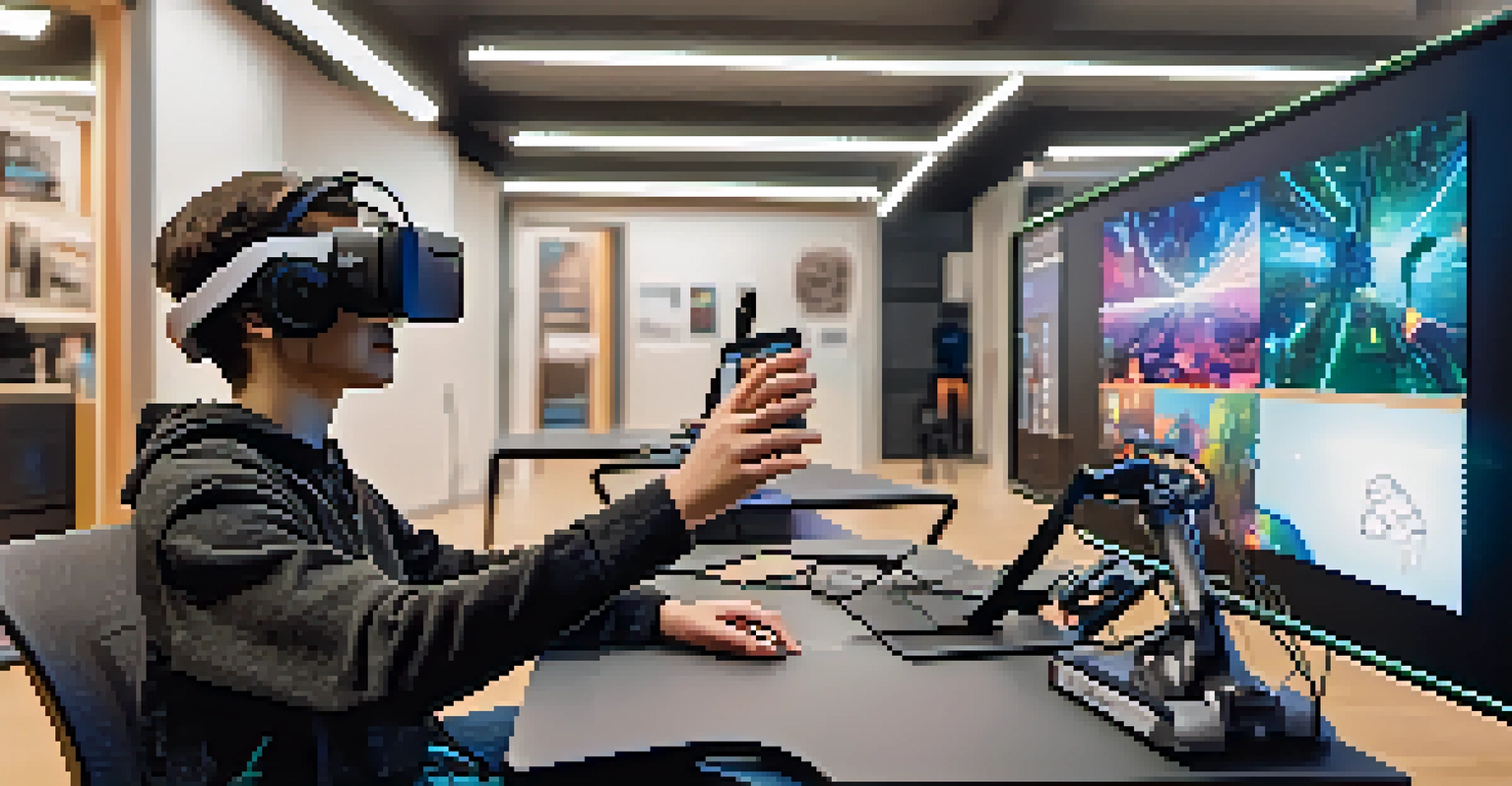The Importance of Accessibility in Digital Learning Tools

What is Accessibility in Digital Learning?
Accessibility in digital learning refers to the design of tools and resources that everyone, including people with disabilities, can use. This means ensuring that content is available to those who may have visual, auditory, or cognitive impairments. By incorporating accessibility features, we create a more inclusive environment for all learners.
Accessibility allows us to embrace diversity and provide equal opportunities for all learners.
For instance, captions on videos help those who are hard of hearing, while screen readers assist visually impaired users in navigating content. Accessible design isn't merely an add-on; it’s a fundamental aspect of creating effective digital learning experiences. Remember, learning should be a right, not a privilege.
Incorporating accessibility isn't just about compliance with laws; it's about fostering an equitable learning experience. When digital tools consider the needs of all users, they enhance user experience and engagement, leading to better educational outcomes.
The Benefits of Accessible Digital Learning Tools
Accessible digital learning tools offer numerous benefits not only for users with disabilities but for all learners. For example, providing content in various formats—such as text, audio, and video—accommodates diverse learning styles. This flexibility can lead to improved comprehension and retention of information.

Moreover, when tools are designed with accessibility in mind, they often streamline learning for everyone. Features like adjustable text sizes and high-contrast visuals can benefit users who may not have disabilities but prefer these options. It’s a win-win situation that enhances the overall learning experience.
Accessibility is Essential for All
Designing digital learning tools with accessibility in mind ensures that everyone, including those with disabilities, can engage effectively.
Ultimately, investing in accessibility creates a positive learning environment that promotes engagement and motivation. When learners feel included and supported, they are more likely to participate actively and succeed in their educational pursuits.
Challenges in Creating Accessible Digital Learning Tools
Despite the clear advantages of accessibility, many digital learning tools still fall short. One major challenge is a lack of awareness among developers about the importance of inclusive design. Often, accessibility features are seen as optional rather than essential, leading to gaps in functionality.
Inclusion is not a privilege, it is a right that should extend to every learner, regardless of their abilities.
Another issue is the complexity involved in implementing accessibility standards. Developers may struggle with guidelines like the Web Content Accessibility Guidelines (WCAG), which can be daunting without proper training. This complexity can lead to half-hearted efforts that don’t fully address the needs of all users.
Additionally, budget constraints can hinder the development of accessible features. Organizations may prioritize other aspects of their digital tools, unintentionally sidelining accessibility. However, it’s crucial to understand that investing in accessibility can lead to broader reach and user satisfaction.
Legal and Ethical Considerations for Accessibility
Accessibility isn’t just a best practice; it’s also a legal requirement in many regions. Laws like the Americans with Disabilities Act (ADA) and Section 508 of the Rehabilitation Act mandate that digital tools be accessible to people with disabilities. Non-compliance can lead to serious consequences, including lawsuits and financial penalties.
Beyond legal obligations, there’s an ethical imperative to ensure accessibility. Every learner deserves equal access to education, and creating inclusive tools is a step towards promoting social equity. When we prioritize accessibility, we honor the diverse needs of our communities.
Investing in Accessibility Pays Off
Accessible tools not only enhance the learning experience for users with disabilities but also benefit all learners through diverse content formats.
Organizations that embrace accessibility not only fulfill their legal duties but also demonstrate their commitment to social responsibility. This commitment can enhance their reputation and attract a wider audience, as more learners feel valued and supported.
Best Practices for Ensuring Accessibility
To create accessible digital learning tools, it’s essential to follow best practices from the outset. Start by involving users with disabilities in the design process; their feedback can provide invaluable insights. This user-centered approach ensures that the final product meets diverse needs effectively.
Additionally, conducting regular accessibility audits can help identify potential barriers within your tools. Utilizing automated tools and user testing can highlight areas for improvement, ensuring a more inclusive experience. Remember, accessibility is an ongoing process that requires vigilance and commitment.
Lastly, providing training for your team on accessibility standards and tools is crucial. Educating developers and content creators about inclusive design principles fosters a culture of accessibility within your organization, leading to better outcomes for all users.
The Role of Technology in Supporting Accessibility
Technology plays a pivotal role in enhancing accessibility in digital learning tools. Innovations such as artificial intelligence (AI), machine learning, and voice recognition can significantly improve user experience. For instance, AI-powered tools can automatically generate captions for videos, making content more accessible to everyone.
Additionally, there are various assistive technologies available, such as screen readers and text-to-speech software, which help users navigate digital content more easily. These tools empower learners with disabilities by providing them with the resources they need to succeed. The integration of such technologies can create a seamless learning experience.
Ongoing Commitment to Inclusivity
Creating accessible digital learning environments requires continuous effort, user involvement, and adherence to best practices.
However, it’s essential to keep in mind that technology should complement, not replace, good design practices. While tools can enhance accessibility, they should be built upon a foundation of thoughtful, inclusive design principles to ensure maximum effectiveness.
The Future of Accessibility in Digital Learning
Looking ahead, the future of accessibility in digital learning tools appears promising, yet challenging. As technology continues to evolve, so too will the ways we can implement accessibility features. Innovations such as virtual reality (VR) and augmented reality (AR) present new opportunities to create immersive, inclusive learning environments.
However, the rapid pace of technological change also necessitates a proactive approach to accessibility. As developers and educators, we must stay informed about emerging trends and adapt our practices accordingly. Continuous education and collaboration will be key to ensuring that accessibility remains a priority.

Ultimately, fostering an inclusive digital learning landscape will require collective efforts from all stakeholders. By prioritizing accessibility today, we can set the stage for a more equitable and effective learning experience for future generations.